Mdina (pronounced im-dee-na, not muh-dee-nah) has been dubbed “The Silent City” for a reason. Although it’s the oldest continuously inhabited city in Malta, the population within the 17th-century walls is now less than 300.
While not quite as violently Disneyfied as Venice, you nonetheless get the sense that you’re looking at an extensive, carefully-preserved open-air museum rather than a living, breathing city.
Here’s the approach (as seen from the top of the wall that the Maltese Jinni told us to walk on):
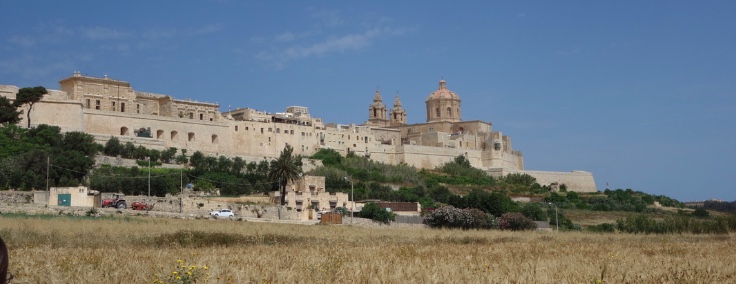
You do get the rather marvelous impression that you’re looking at a truly baroque skyline—as near as I can tell, there are no buildings in Mdina more recent than perhaps the year 1800 (and most are much older than that).
Here’s the city gate, built in 1724 during Mdina’s last revival under the Knights Hospitaller:
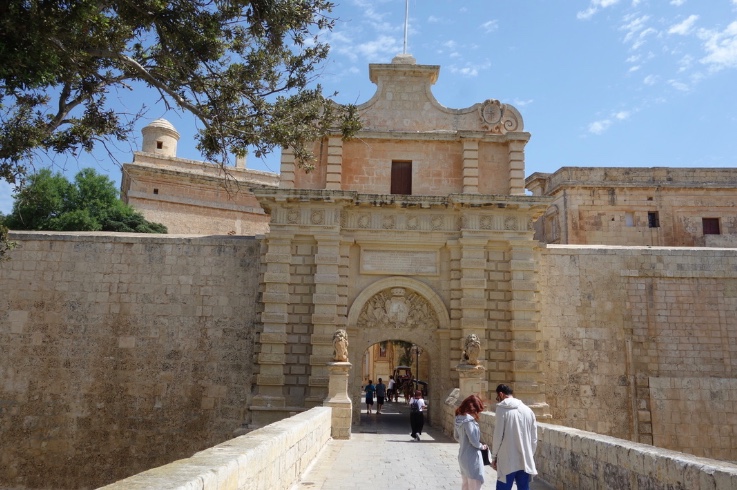
This is the Palazzo Vilhena (named for the Grand Master who commissioned it). Built during the same revival period (completed 1728), it was the Grand Master’s summer quarters:
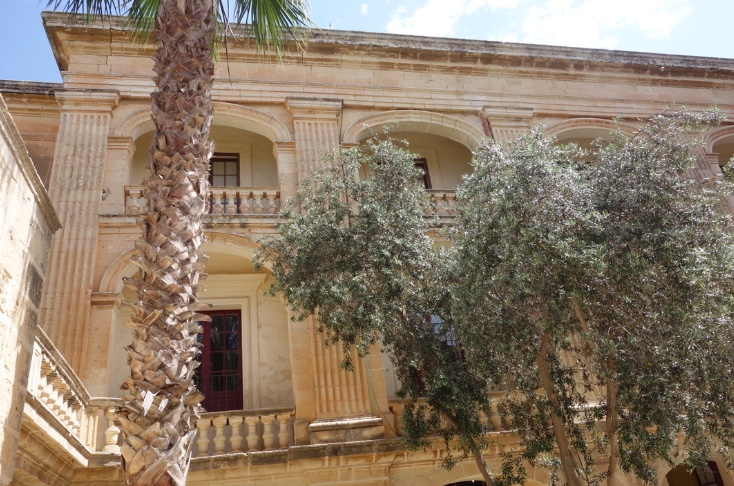
(Here’s an up-close of the front of the palace, which stands just inside the city gate and forms three sides of a square. It currently houses a museum that we didn’t visit because we were too cheap.)
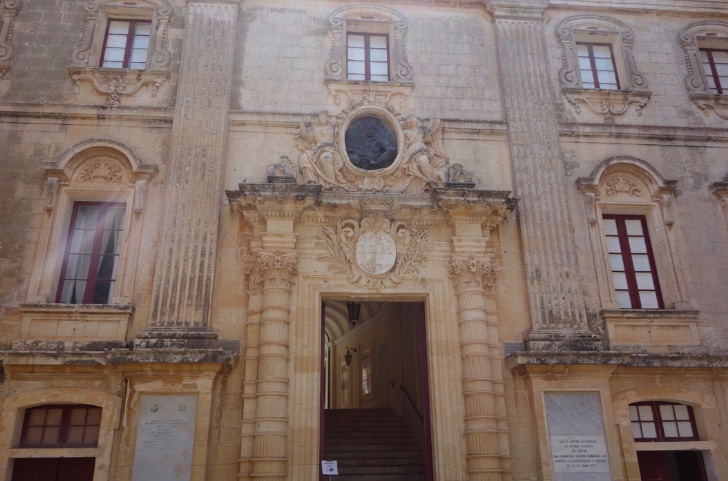
This is one corner of the Cathedral of St. Paul. It was originally constructed by the Normans in the 13th century, but it was severely damaged in the Sicily earthquake of 1693 and was subsequently completely rebuilt in the baroque style.
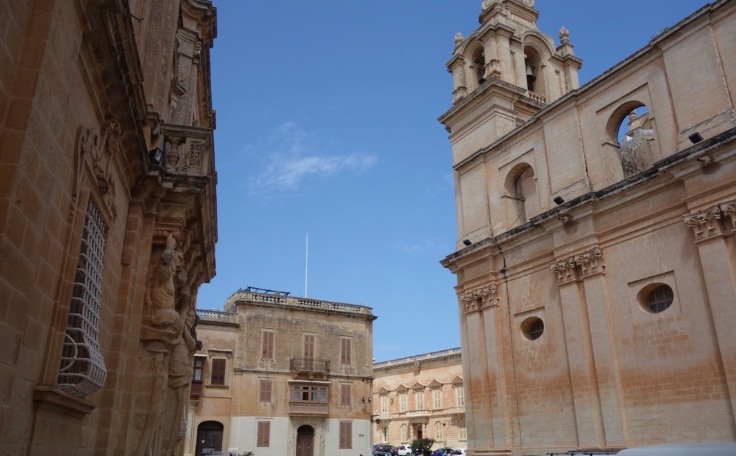
More palazzos:
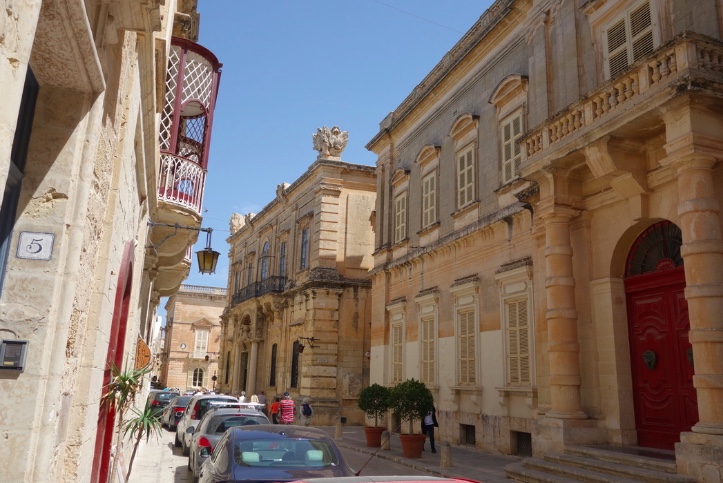
And of course, to really know a place, you must (repeat after me) get lost in its back streets. Anna and I certainly attempted this, but Mdina isn’t big enough to get lost in. Within about forty minutes, we knew our way around.
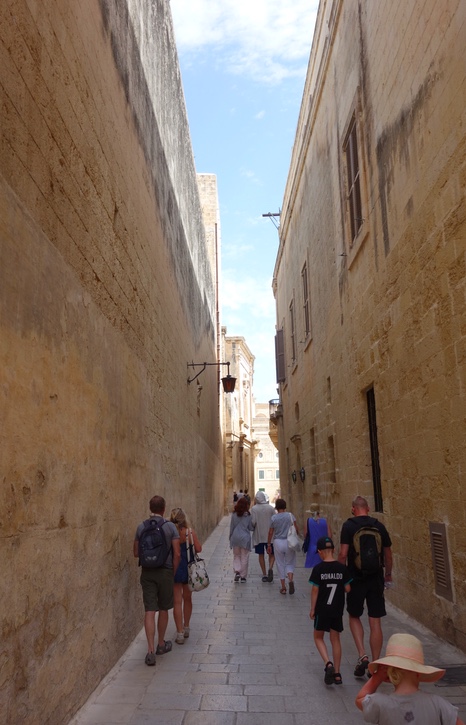
Incidentally, you’re looking at some truly medieval backstreets here. Mdina was the home of the Maltese nobility, and many of these houses have beautiful balconies and courtyards. What I wouldn’t give to see the interiors!
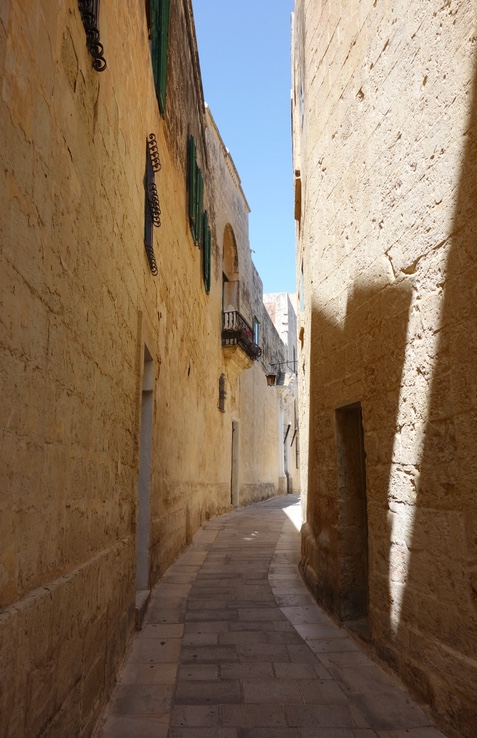
Below is the entrance to a restaurant whose back wall dates back to about 1,000 A.D. It was thought for a long time that no traces of the Arabic city remained, but the wall was recently dated to this period. I didn’t get a photo of it because the lighting was too dim, but it really doesn’t look any different than any other wall in Mdina. I really want to know how these things are dated—I’d love to be able to look at a wall and just know how old it is. (Am I the only one who has to know the year something was built in order to really appreciate it? To me, everything is a modern construction until proven otherwise by an informational plaque.)
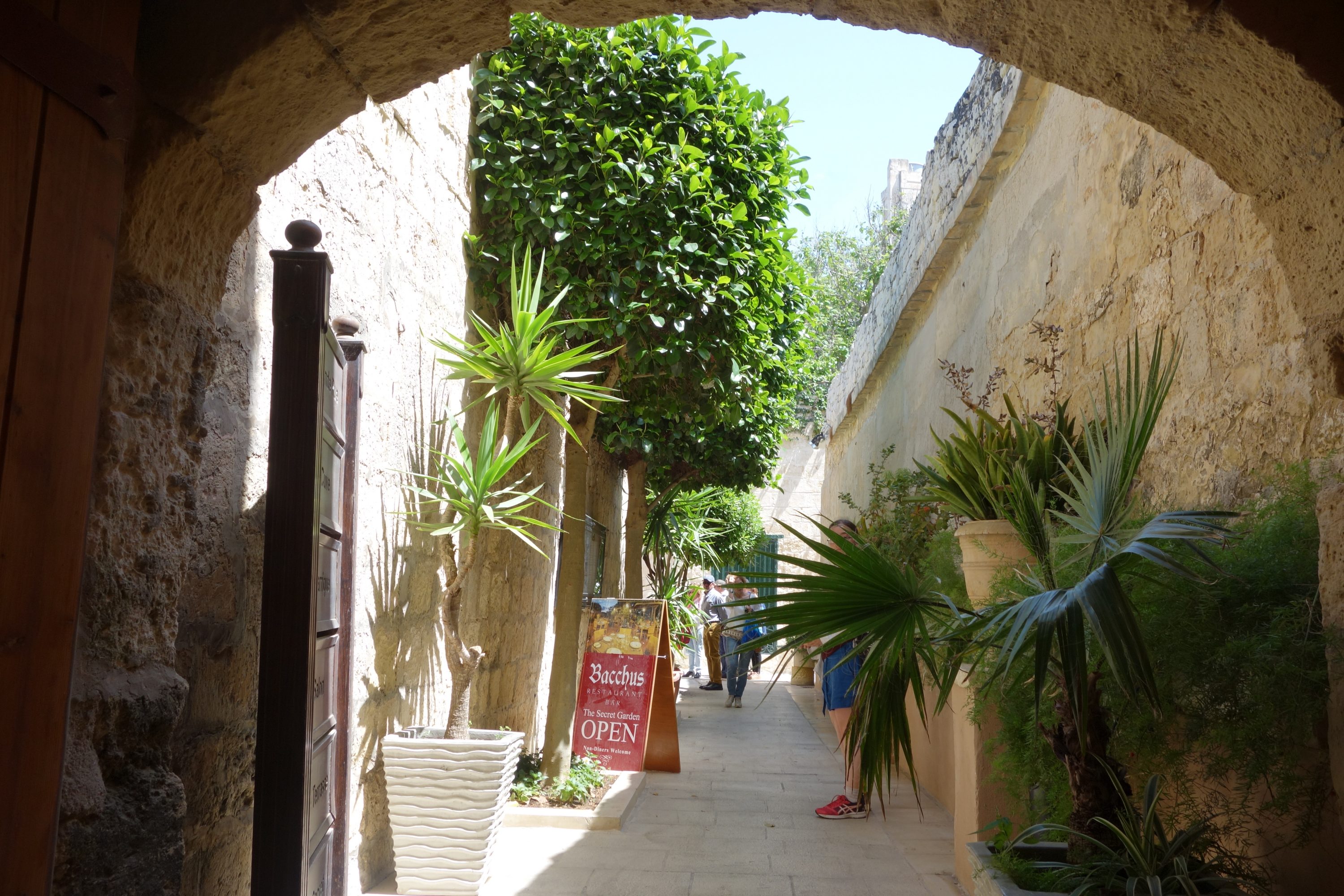
As for Mdina’s nickname ‘Silent City’:
For centuries, Mdina was the most important city on the island. It was the home of the nobility and the administrative seat of the Knights Hospitaller. But in the lead-up to the Siege of Malta, the knights moved their headquarters to Birgu, a fishing village which they were hastily fortifying because of its strategic importance. Almost overnight, with its power gone, Mdina declined and was partially deserted. It experienced a few subsequent revivals, but it never recovered its full importance.
Now, it consists almost entirely of nice restaurants, souvenir shops, gelaterias and museums. The tourists far outnumber the residents. It no longer feels entirely like a living city. Still, as far as tourist-dependent Old Towns go, it’s certainly worth a visit.